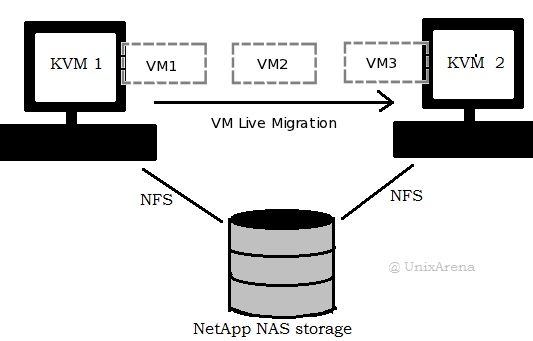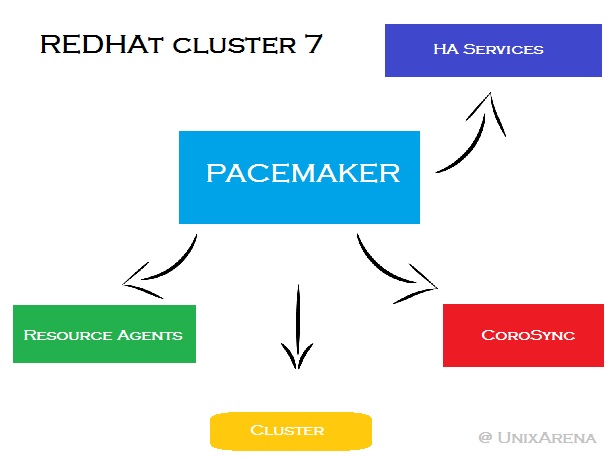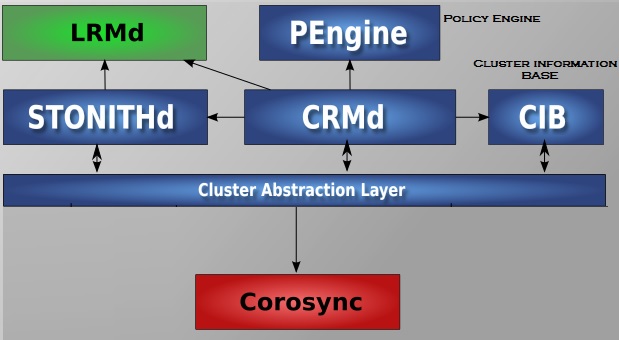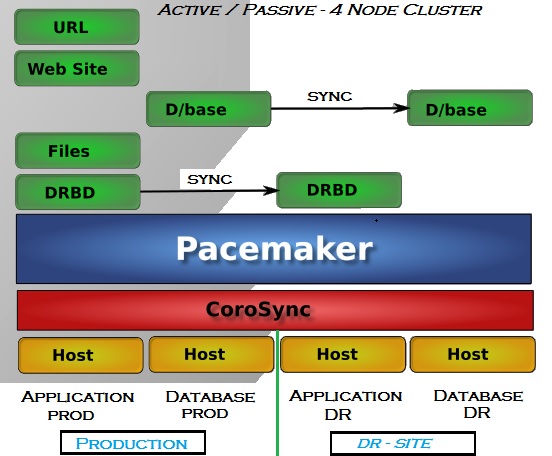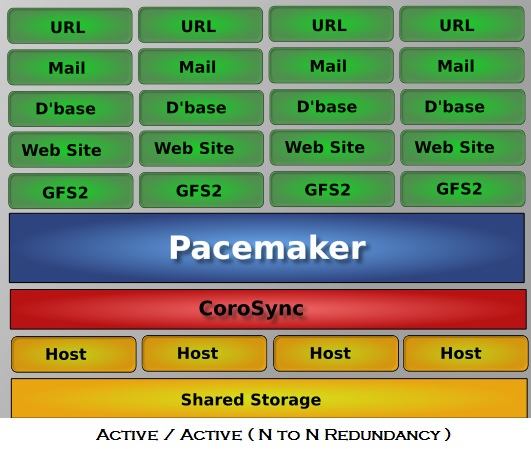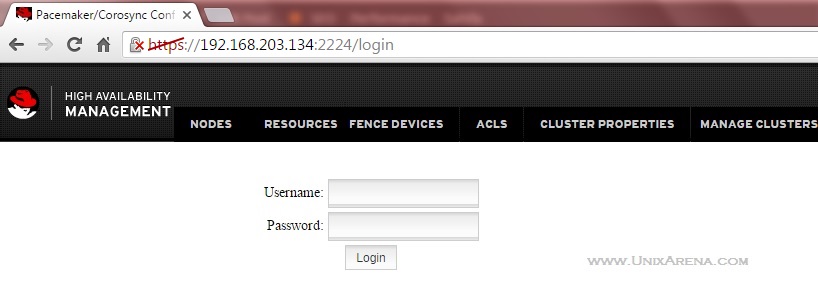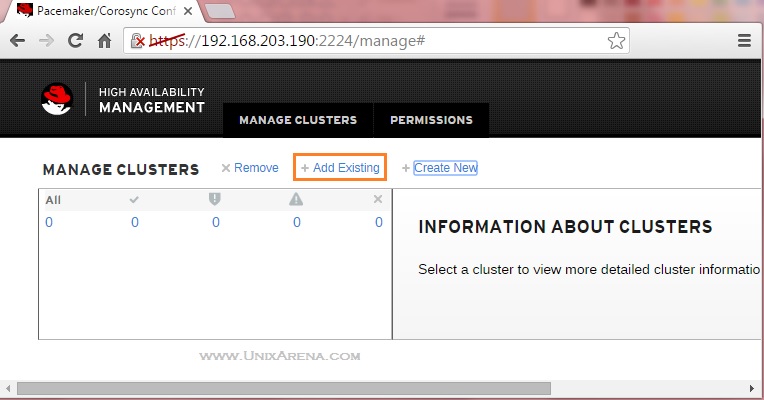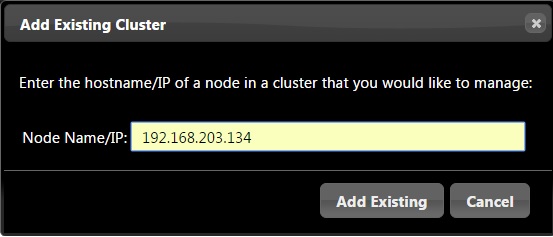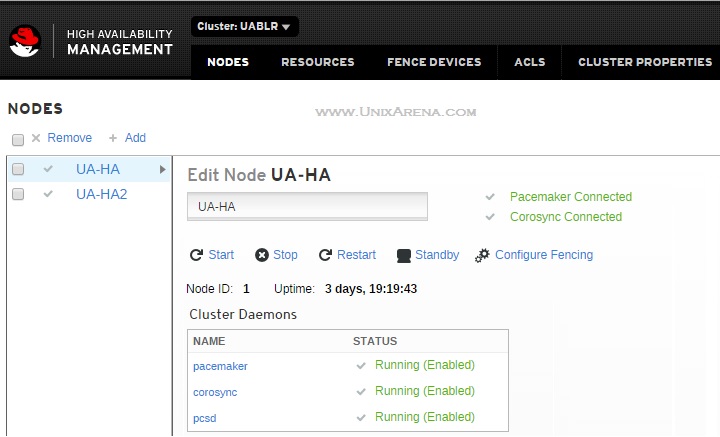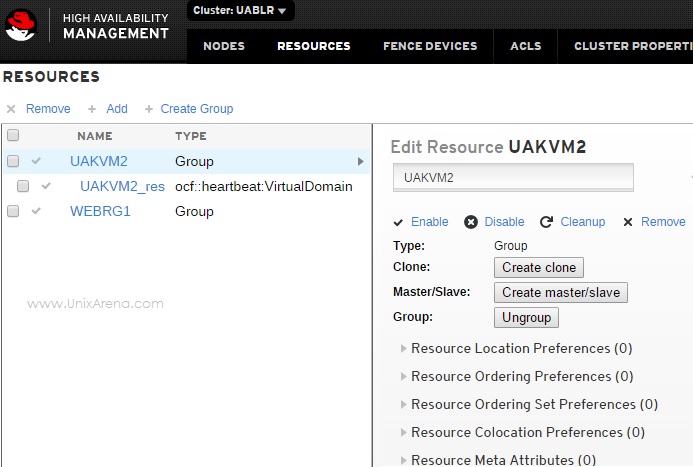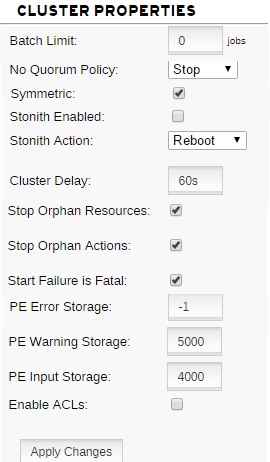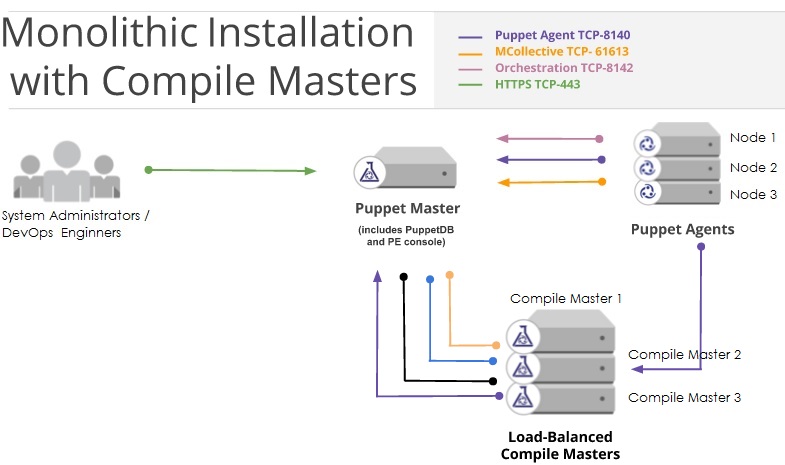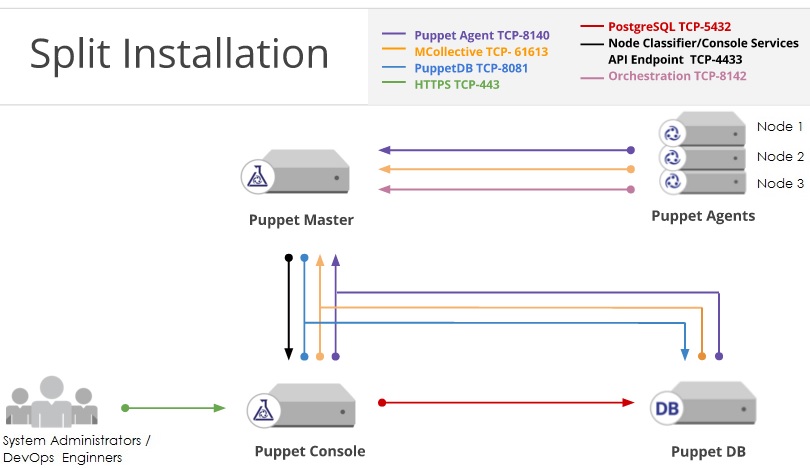If you want to build several VMs with the same OS and configuration, “CLONE ” is the best method to save the time instead of installing operating system on each virtual machines. “virt-clone” is useful binary tool to clone the virtual machines with unique ID and MAC address (When you clone from existing virtual machine). To perform the clone, virtual machine should be in powered off state. You need to perform the host configuration for new VM after the build using Virt-sysprep.
Clone the VM:
1.Login to the KVM host or Management node.
2.List the running VM.
[root@UA-HA ~]# virsh list Id Name State ---------------------------------------------------- 18 UAKVM2 running [root@UA-HA ~]#
3.Suspend the source virtual machine. This is a requirement since it ensures that all data and network I/O on the VM is stopped. You can also shutdown the VM .
[root@UA-HA ~]# virsh suspend UAKVM2 Domain UAKVM2 suspended [root@UA-HA ~]# virsh list Id Name State ---------------------------------------------------- 18 UAKVM2 paused [root@UA-HA ~]#
4. Clone the virtual machine.
[root@UA-HA ~]# virt-clone --connect qemu:///system --original UAKVM2 --name UACLONE --file /var/lib/libvirt/images/UACLONE.qcow2 WARNING Setting the graphics device port to autoport, in order to avoid conflicting. Allocating 'UACLONE.qcow2' 100% [===================================================] 12 MB/s | 4.0 GB 00:01:19 Clone 'UACLONE' created successfully. [root@UA-HA ~]#
=================================================| Options | Value | Description | =================================================| --original | UAKVM2 | Source Virutal Machine | --name | UACLONE | New Virtual Machine Name | --file | File_path| New virtual Disk Path | --connect | qemu:///system | Connect to the KVM hypervisor | ==================================================
5. Resume the source virtual Machine.
[root@UA-HA ~]# virsh resume UAKVM2 Domain UAKVM2 resumed [root@UA-HA ~]# [root@UA-HA ~]# [root@UA-HA ~]# virsh list --all Id Name State ---------------------------------------------------- 18 UAKVM2 running - UACLONE shut off [root@UA-HA ~]#
We have successfully clone the existing virtual machine to new VM. But the newly cloned virtual machine will still have the config (Ex: IP , Hostname ) of source machine which needs to be removed.
virt-sysprep: Prepare the VM:
Virt-sysprep resets or un-configures a virtual machine to Fresh OS installation state. Virt-sysprep removes SSH host keys, persistent network MAC configuration, hostname and user accounts. Each step can be enabled or disabled as required. Virt-sysprep modifies the guest or disk image without booting the VM.
Decontextualize the image – Reset or Un-configure the VM
[root@UA-HA ~]# virt-sysprep -d UACLONE [ 0.0] Examining the guest ... [ 171.0] Performing "abrt-data" ... [ 171.0] Performing "bash-history" ... [ 171.0] Performing "blkid-tab" ... [ 171.0] Performing "crash-data" ... [ 171.0] Performing "cron-spool" ... [ 171.0] Performing "dhcp-client-state" ... [ 171.0] Performing "dhcp-server-state" ... [ 171.0] Performing "dovecot-data" ... [ 171.0] Performing "logfiles" ... [ 172.0] Performing "machine-id" ... [ 172.0] Performing "mail-spool" ... [ 172.0] Performing "net-hostname" ... [ 172.0] Performing "net-hwaddr" ... [ 172.0] Performing "pacct-log" ... [ 172.0] Performing "package-manager-cache" ... [ 172.0] Performing "pam-data" ... [ 172.0] Performing "puppet-data-log" ... [ 172.0] Performing "rh-subscription-manager" ... [ 172.0] Performing "rhn-systemid" ... [ 172.0] Performing "rpm-db" ... [ 172.0] Performing "samba-db-log" ... [ 172.0] Performing "script" ... [ 172.0] Performing "smolt-uuid" ... [ 172.0] Performing "ssh-hostkeys" ... [ 172.0] Performing "ssh-userdir" ... [ 172.0] Performing "sssd-db-log" ... [ 172.0] Performing "tmp-files" ... [ 172.0] Performing "udev-persistent-net" ... [ 172.0] Performing "utmp" ... [ 172.0] Performing "yum-uuid" ... [ 172.0] Performing "customize" ... [ 172.0] Setting a random seed [ 173.0] Performing "lvm-uuids" ... [root@UA-HA ~]# [root@UA-HA ~]#
Have a look at the following command output to know what are the operations has been performed by virt-sysprep tool.
[root@UA-HA ~]# virt-sysprep –list-operations[root@UA-HA ~]# virt-sysprep --list-operations abrt-data * Remove the crash data generated by ABRT bash-history * Remove the bash history in the guest blkid-tab * Remove blkid tab in the guest ca-certificates Remove CA certificates in the guest crash-data * Remove the crash data generated by kexec-tools cron-spool * Remove user at-jobs and cron-jobs customize * Customize the guest dhcp-client-state * Remove DHCP client leases dhcp-server-state * Remove DHCP server leases dovecot-data * Remove Dovecot (mail server) data firewall-rules Remove the firewall rules flag-reconfiguration Flag the system for reconfiguration fs-uuids Change filesystem UUIDs kerberos-data Remove Kerberos data in the guest logfiles * Remove many log files from the guest lvm-uuids * Change LVM2 PV and VG UUIDs machine-id * Remove the local machine ID mail-spool * Remove email from the local mail spool directory net-hostname * Remove HOSTNAME in network interface configuration net-hwaddr * Remove HWADDR (hard-coded MAC address) configuration pacct-log * Remove the process accounting log files package-manager-cache * Remove package manager cache pam-data * Remove the PAM data in the guest puppet-data-log * Remove the data and log files of puppet rh-subscription-manager * Remove the RH subscription manager files rhn-systemid * Remove the RHN system ID rpm-db * Remove host-specific RPM database files samba-db-log * Remove the database and log files of Samba script * Run arbitrary scripts against the guest smolt-uuid * Remove the Smolt hardware UUID ssh-hostkeys * Remove the SSH host keys in the guest ssh-userdir * Remove ".ssh" directories in the guest sssd-db-log * Remove the database and log files of sssd tmp-files * Remove temporary files udev-persistent-net * Remove udev persistent net rules user-account Remove the user accounts in the guest utmp * Remove the utmp file yum-uuid * Remove the yum UUID [root@UA-HA ~]#
virt-sysprep Options:
Virt-sysprep provides the additional option to configure the VM or template.
-a file Add disk image file --add file Add disk image file -c uri Set libvirt URI --chmod PERMISSIONS:FILE Change the permissions of a file --connect uri Set libvirt URI -d domain Set libvirt guest name --debug-gc Debug GC and memory allocations (internal) --delete PATH Delete a file or directory --domain domain Set libvirt guest name --dry-run Perform a dry run --dryrun Perform a dry run --dump-pod Dump POD (internal) --dump-pod-options Dump POD for options (internal) --edit FILE:EXPR Edit file using Perl expression --enable operations Enable specific operations --firstboot SCRIPT Run script at first guest boot --firstboot-command 'CMD+ARGS' Run command at first guest boot --firstboot-install PKG,PKG.. Add package(s) to install at first boot --format format Set format (default: auto) --hostname HOSTNAME Set the hostname --install PKG,PKG.. Add package(s) to install --keep-user-accounts users Users to keep --link TARGET:LINK[:LINK..] Create symbolic links --list-operations List supported operations --long-options List long options --mkdir DIR Create a directory --mount-options opts Set mount options (eg /:noatime;/var:rw,noatime) -n Perform a dry run --no-logfile Scrub build log file --no-selinux-relabel Compatibility option, does nothing --operation Enable/disable specific operations --operations Enable/disable specific operations --password USER:SELECTOR Set user password --password-crypto md5|sha256|sha512 Set password crypto -q Don't print log messages --quiet Don't print log messages --remove-user-accounts users Users to remove --root-password SELECTOR Set root password --run SCRIPT Run script in disk image --run-command 'CMD+ARGS' Run command in disk image --script script Script or program to run on guest --scriptdir dir Mount point on host --scrub FILE Scrub a file --selinux-relabel Relabel files with correct SELinux labels --timezone TIMEZONE Set the default timezone --update Update core packages --upload FILE:DEST Upload local file to destination -v Enable debugging messages -V Display version and exit --verbose Enable debugging messages --version Display version and exit --write FILE:CONTENT Write file -x Enable tracing of libguestfs calls -help Display this list of options --help Display this list of options
Let’s set the root password and hostname using virt-sysprep.
[root@UA-HA ~]# virt-sysprep -d UACLONE --hostname UACLONE --root-password password:123456 [ 0.0] Examining the guest ... [ 32.0] Performing "abrt-data" ... [ 32.0] Performing "bash-history" ... [ 32.0] Performing "blkid-tab" ... [ 32.0] Performing "crash-data" ... [ 32.0] Performing "cron-spool" ... [ 32.0] Performing "dhcp-client-state" ... [ 32.0] Performing "dhcp-server-state" ... [ 32.0] Performing "dovecot-data" ... [ 32.0] Performing "logfiles" ... [ 33.0] Performing "machine-id" ... [ 33.0] Performing "mail-spool" ... [ 33.0] Performing "net-hostname" ... [ 33.0] Performing "net-hwaddr" ... [ 33.0] Performing "pacct-log" ... [ 33.0] Performing "package-manager-cache" ... [ 33.0] Performing "pam-data" ... [ 33.0] Performing "puppet-data-log" ... [ 33.0] Performing "rh-subscription-manager" ... [ 33.0] Performing "rhn-systemid" ... [ 33.0] Performing "rpm-db" ... [ 33.0] Performing "samba-db-log" ... [ 33.0] Performing "script" ... [ 33.0] Performing "smolt-uuid" ... [ 33.0] Performing "ssh-hostkeys" ... [ 33.0] Performing "ssh-userdir" ... [ 33.0] Performing "sssd-db-log" ... [ 33.0] Performing "tmp-files" ... [ 33.0] Performing "udev-persistent-net" ... [ 33.0] Performing "utmp" ... [ 33.0] Performing "yum-uuid" ... [ 33.0] Performing "customize" ... [ 33.0] Setting a random seed [ 33.0] Setting the hostname: UACLONE [ 33.0] Setting passwords [ 36.0] Performing "lvm-uuids" ... [root@UA-HA ~]#
Power on the VM:
1. Power on the New VM
[root@UA-HA ~]# virsh list --all Id Name State ---------------------------------------------------- 18 UAKVM2 running - UACLONE shut off [root@UA-HA ~]# virsh start UACLONE Domain UACLONE started [root@UA-HA ~]#
2. check the VM’s status
[root@UA-HA ~]# virsh list Id Name State ---------------------------------------------------- 18 UAKVM2 running 28 UACLONE running [root@UA-HA ~]#
3. Launch virt-viewer to view the UACLONE console.
[root@UA-HA ~]# virt-viewer 28 ------> 28 is VM ID ** (virt-viewer:10053): WARNING **: Couldn't connect to accessibility bus: Failed to connect to socket /tmp/dbus-6XZ1eVgijP: Connection refused (virt-viewer:10053): Gdk-CRITICAL **: gdk_window_set_cursor: assertion 'GDK_IS_WINDOW (window)' failed
4. Verify the hostname of UACLONE. You can see that “virt-sysprep” has made the settings.

Looks good. We have successfully cloned the existing VM and reset the config of the clone VM using “virt-sysprep”.
Hope this article is informative to you.
The post How to clone a KVM virtual Machines and reset the VM – Part 6 appeared first on UnixArena.







